Where Man Meets Mountain (In a Museum)
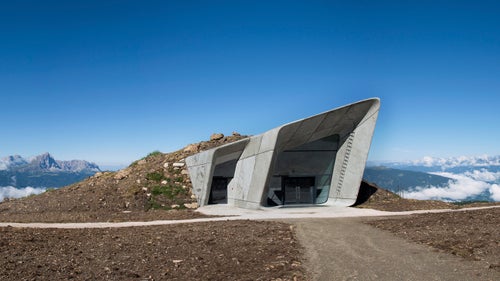
In 1978, explorer, mountaineer, and author made the first ascent of Everest without supplemental oxygen. By 1986, he had become the first man to climb all 14 of the world’s “Eight-Thousanders” (mountains over 8,000 meters, or 26,000 feet). Messner’s mountaineering roots run deep. Born and raised in Villnöß, Italy, among the alps and the Dolomites range, Messner summited his first peak by age five, and bagged the unclimbed Rupal face of in the Himalayas at age 26 with his brother, Günther.
In 2003, Messner began work on the (MMM) project, a series of six interdisciplinary spaces devoted to exploring the nature, history, and culture of the mountains they are embedded in and to those who love to climb them. The locations pay homage to Messner’s roots in northern Italy, with museums located in Firmian, Juval, Dolomites, Ortles, Rip, and most recently, Corones. The museums are meant to not only serve as physical legacies and educational centers, but also as aesthetic tributes to the landscape with their stunning architecture. Here is a closer look at the six installments of the $3.3 million project.
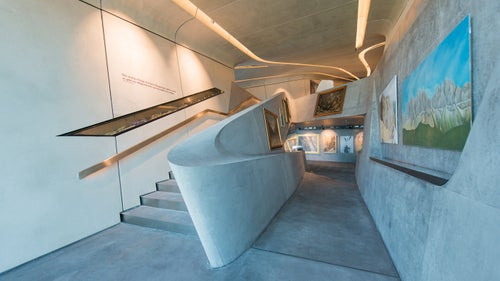
Opened in July 2015, the final installment of the MMM project, Corones, is built on the top of the Kronplatz mountain (Plan de Corones) at an altitude of 7,463 feet in the Mount Kronplatz ski resort. Renowned British architect Zaha Hadid designed the 3,280-square-foot exhibition dedicated to traditional climbing history and the discipline of mountaineering.
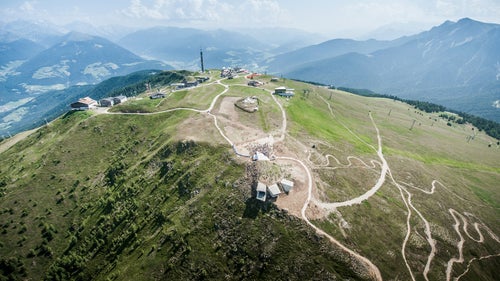
Architect Hadid said in a press release that the concept behind the design is “the idea that visitors can descend within the mountain to explore its caverns and grottos, before emerging through the mountain wall on the other side, out onto the terrace overhanging the valley far below with spectacular, panoramic views.”
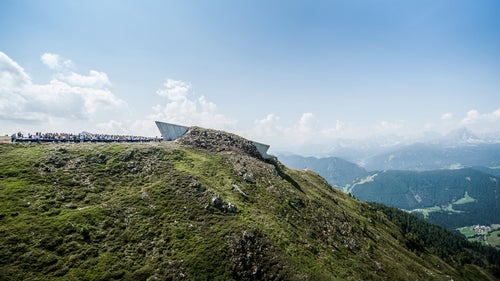
140,000 cubic feet of Mount Kronplatz was excavated and replaced during construction. The land surrounding the completed structure now aids in maintaining the internal temperature of the building, as it is divided into several levels above and below ground to reduce its carbon footprint.
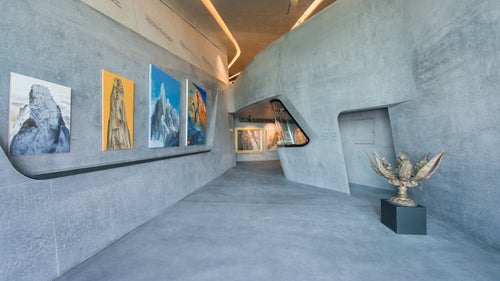
The interior and exterior panels of Corones are made from a light shade of glass-reinforced fiber concrete to reflect the hue of the Dolomites’ craggy limestone peaks, creating a subtle and cohesive presence within the mountainside. Exhibits include a series of tools, photographs, and objects from Messner’s mountaineering career.
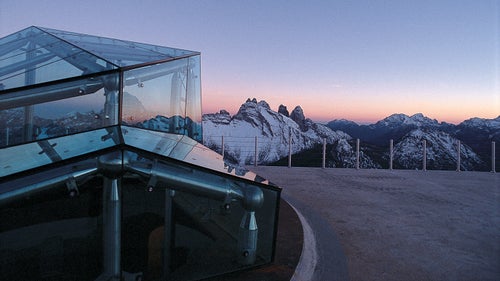
MMM Dolomites, sits at an altitude of 7,155 feet and is housed in Fort Monte Rite, a World War I station between Cortina d’Ampezzo and Pieve di Cadore. Opened in 2002, it is known as “the museum in the clouds.” The fort has been completely restored and modern structures have been added throughout. Old rotating gun turrets were replaced with lanterns and irregular panes of glass that mimic crystals—a characteristic of the dolomite rock.
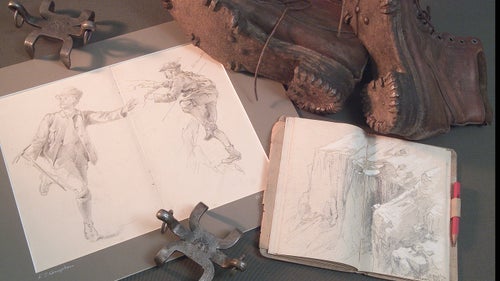
MMM Dolomites exhibition theme is “The Vertical World of the Dolomites,” and covers the history of the exploration of the mountain range. The current exhibition series, which runs through September 30 is titled “Mountains in War.”
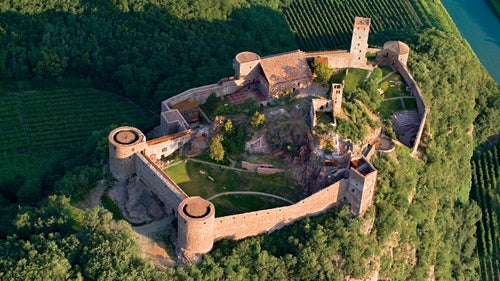
MMM Firmian was the centerpiece museum of the project, opening its doors in 2006. Based in Sigmundsk Castle—where construction dates back to the Late Middle Ages—in Bolzano, Italy. Firmian serves as the headquarters, administration hub, and event facility for MMM. It took three years of restoration to bring the castle back from its ruined state, but architect Werner Tscholl took care to preserve the integrity of the historical building’s original design. A rock theatre within the castle walls seats 200 people for documentary screenings.
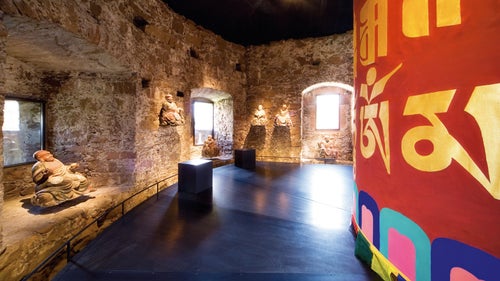
Firmian’s exhibition and design theme is the subject of man’s encounters with the mountains, with Messner describing the content as showing “what effect the mountain has on people.” Pictures, memorabilia, and sculptures line the castle hallways while a separate exhibit documents the history of the castle and the Firmian region.
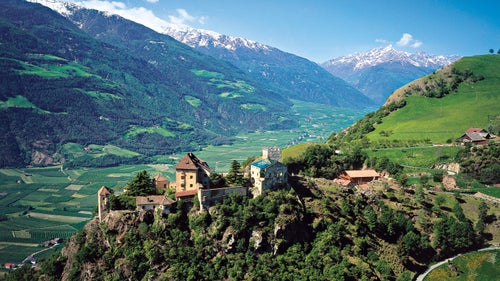
Messner privately owns the Juval museum and uses it during the summer months as his home. Opened in 1995, the exhibits are located within the medieval Juval castle walls, with Messner using the nearby Naturns Castle as his residence.